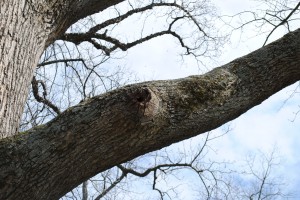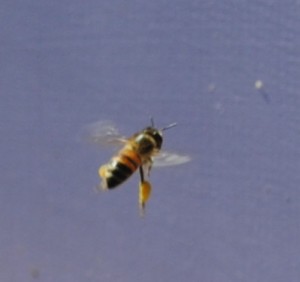Laying Worker/Workers, Dud Swarm and World Record
The temperatures to the east of Richmond, Virginia felt like 200 degrees when in full sun, in my bee gear. Makes me appreciate some of the advice that I received early on (and foolishly dismissed): bees may like it in full sun, but I like to be in the shade when I do my inspections, an experienced beekeeper once told me. Normally, I set my hives with their northern/northwestern backs to a good, deciduous tree, which gives me a bit of a break from the heat in the late afternoon. But, in my Nuc Yard (where I keep all young hives, Nuc’s or otherwise), I have to place them where I have space, which is frequently in a Sunny position all day long!
Normally, I do not do a full inspection of my entire Nuc yard every week (I did one last weekend and the next one is scheduled for next weekend.) I do check my regular Nucs every 4 to 5 days, but the rest do not get checked as frequently. But, after the bee inspection, I had to get in there to straighten the frames and square them (the inspector was not as particular about this when he was going through my hives…something I obviously noted and needed to correct this weekend.) It was a fairly eventful inspection, to be sure.
My first check was the Estes Swarm, a swarm about the size of a pine cone that I ‘caught’ (maybe the term is ‘pocketed’ for this size swarm…) after I noticed the queen crawling around on my hand after I broke the branch off that the bees were hanging on to show to a friend. Maybe I never caught the queen (I never laid eyes on her after I got back home) or maybe she was a virgin that never returned from her love voyage. Either way, it has been over 3 weeks since I caught them and I should have seen eggs (and I should have seen her by now, given the size of the bees.) I ended up combining them with a teenage Nuc (basically a Nuc that had done well enough to advance to a Deep and was on the verge of needing a Medium.
My next inspection was worse news. I had created a Nuc with two deep frames of brood, both of which had at least one swarm cell. The problem, I think, was that I overloaded the thing with Nurse bees shaken from a couple of hives. The thing was busting out on Day 1 and I should have done something about it (lesson learned.) I am pretty sure they swarmed (maybe twice) when the queens came out as the bee number reduced a lot in about 10 days and I never found a queen. I haven’t reviewed my bee log, but I know that I had identified the problem over two weeks ago and given them a frame of eggs from a proven hive (Apache). I noticed a queen cell sometime later and hoped to find a laying queen today. Instead, I find tons of capped drone…tons of it. I see eggs laid dead center of many cells but cannot find the queen to save my life. With all of that drone brood, I was suspicious, so I started to inspect lots of ’empty’ cells. Finally, I find the tell-tale sign of a laying drone (probably more then one) – 3+ eggs in a cell. I checked the hive (a third time) for a queen (hoping against all odds) and found more of these daggone cells with multiple eggs. I have notes about what to do in this situation and now laugh at them (I wrote them without much experience). There is no way that I am going to put a frame of brood/eggs into this Nuc every week for 3 or more weeks (I might as well create 3 new Nucs instead.) I think this advice is if you have a full hive that has laying workers – it doesn’t make sense to do this with a Nuc. So, I combined them with a nearly mature hive (mature means a Deep and a Medium that is a week or so from being moved to an outyard.) I marked the queen in that hive, so we’ll see if they combine well or not (you gotta learn sometime.)
So, two Nuc’s (well, 1 real Nuc and 1 swarm that was in a Nuc) were a bust and those were the first two hives I inspected. Not a good start. Fortunately, the rest of the inspections went fairly well except for two near miss issues with marking new queens (I fumbled BOTH jobs and ended up leaving the ladies alone for a later marking – all the while hoping I didn’t damage them.) One Nuc is ready for sale, which a fellow is coming by to get tomorrow. I also upgraded 1 to a teenager (moved to a full Deep.) The rest are doing fine with good laying queens that should be ready for action within the next two weeks. I want to get these done with by July 1, when I will embark on my Overwintering Nuc program.
One really positive note is something that I honestly would have a hard time believing if I read on someone else’s blog, but I am going to relay it anyway. On May 23, I received a call from a beekeeper down the road that one of his hives swarmed (I had already picked up a swarm from one of his hives earlier this year, so this was number 2). I couldn’t believe the size of this swarm (I will get a video up on it shortly.) This thing was big by my standards and it was tough getting them in the single deep that I brought along. When I went to pick them up, a solid pound of bees or more were hanging all over the front of the hive (I have never had this happen before.) Since they were not in the hive, I couldn’t tape them up, so I gingerly strapped the hive together and transported them in my car, while they hung on the front (thankfully, I did not get into an accident…) The next day, there were still a ton of bees hanging all over the front, so I decided to give them a Medium of foundation. I was a bit concerned about this, as I was basically giving this hive a full deep and a full medium of foundation – that’s a lot of space for a new swarm. What would they do? Would they just draw out the center frames of each box? Would they only focus on the top Medium (just below the feeder)? I gave them a single gallon of light (2 parts water:1 part sugar) syrup (all I had mixed at the time) and watched them occasionally during the week. The inspector passed over this box, so I had not looked in them since the 23rd. Today, I checked. To my complete amazement, they had drawn out every single frame on both boxes (although the outer frames on both supers were only half drawn)! I was amazed. They filled out a full brood chamber (for me, which is a Deep and a Medium) in a little over a week with ONLY 1 gallon of syrup! (It should be noted that the inspector was surprised by the nectar my bees were bringing in – he has a yard at VSU which was not bringing in much, a surprise to me). The wild thing was that I did find the queen but she had only started laying eggs – not even any C-shaped larva (that I could find, anyway.) Normally, I would have expected to see something just about capped at this point. It must have been a virgin, which is hard to believe – this could not have been a ‘secondary’ swarm. The hive that cast a swarm this big as a secondary swarm would have to be 10+ supers tall!
But, it was two weeks ago (I think) that the same fellow called me about a swarm, but when I got to his house, he advised that they had all just flown back into his hive. It makes me wonder if the old queen was in that swarm and somehow died or failed to make it to the initial landing branch (and perished in the process.) Maybe she was with them and when they went back to the hive, the virgin killed her. Who knows (I certainly don’t.) In the end, I put a shallow on them just in case and now have to figure out when I will move them to an outyard. I rarely have a hive this big that I have to move and am pretty certain it will break my back.
In closing, it reminds me of the old saying that a swarm in May is worth a load of hay, a swarm in June is worth a silver spoon, but a swarm in July ain’t worth a fly! This was definitely a silver spoon (and maybe a fork too!) In my book, it is a World Record.


